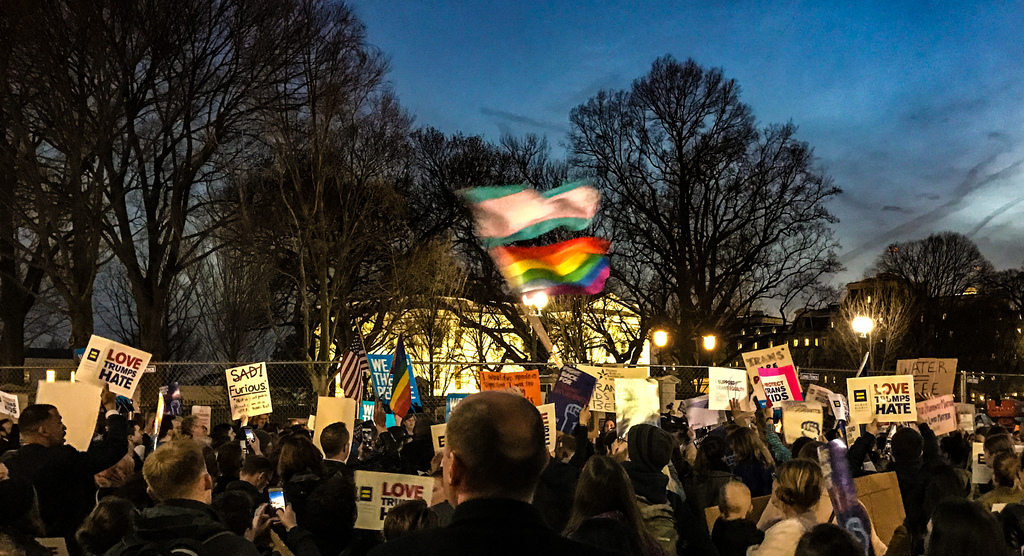EDITOR’S NOTE: This post has been submitted by SOAS Entitled Magazine.
Money is one thing that dominates today’s world, being the most common indicator that is responsible for measuring our quality of life. We’re judged by our income in measuring one’s standard of living; our purchasing power hints to us how much we can buy with one unit of money; the Gini coefficient reveals where we stand amongst others in the economic spectrum of income. In a society where material wealth often dominates our narrative, money often translates to power.
And where there is money, there will be inequality. Economists all over the world have long debated about the problem of inequality. They research and organise conferences, though mainly from a heterogeneously economic perspective – understandably, from an economist’s position. So when we think about inequality we are quick to jump to salaries and property, possessions and earnings. But my question to you is this: should the perception of inequality be solely economic? Is the economic measure of inequality adequate to discuss and compare all problems that people may face? Taking an economic view, the common perception seems to be, yes. While other factors contribute to our understanding of inequality, the economic side clearly prevails. Yet I find that this indicator is not as justified as it may seem.
Most of us know that inequality is multifaceted. We try to understand this mass of unknown by distilling it into tangible economic measures. We have started there and have come a long way. Yet, the common economic narrative still lacks discussion on other measures – the ones aside from the economic sphere that we also know to be crucial aspects of inequalities. In particular, gender and racial inequalities are two such examples. Being some of the biggest barriers to human development, we can be pleased to say that gender and racial problems are being explored more and are finding a platform especially among young people who, as children of a globalised world, tend to be more accepting of pluralistic societies. It is, in my opinion, a good change.
However, with change comes fear. Fearing a new normal, some people mistake the fight for equality with an attack on their wealth, power or rights. Our economic system is built on individual autonomy; without social safeguards in place, it is a fight of every man for himself. Thus, it is not hard to imagine that people are willing to let self-interest prevail in order to eliminate perceived threats to their financial safety, some examples being economic policies in favour of immigrants or promotion of equal pay for people of colour. The fear of pluralism and mixing human capital shows vividly in the growing rejection of political correctness all over the world that we have seen in 2016. It reflects a misunderstanding and fear of treating gender and racial issues with respect and dignity, a fear of equality and a fear of taking on the responsibility for equality.
The trophy call of President-elect Donald Trump to build a border in Mexico is just but one example of people in existing powerful and wealthy positions pushing against potential changes in society’s approach towards marginalized groups, of which the latter could have brought the US closer to equality. It is unfortunate that these people fail to see how addressing issues such as racial inequality does not take something away from them. It would actually improve the running and long-term stability of the economy. For now, inequalities vehemently persist and cast a shadow on an otherwise rapidly developing society and economy.
In the UN, we do see efforts to introduce a more holistic view of equality: With the help of leading economists such as Professor Jeffrey D. Sachs, in particular in his capacity as Special Advisor to the Secretary-General on the UN Millennium Development Goals, gender has been introduced into public discourse. In 2005, the UN Task Force on Education and Gender Equality definitely declared that “gender equality is critical to achieving all the [Millennium Development] Goals”, including that of poverty, primary education, and environmental sustainability. By introducing a three-tiered breakdown, it funnels efforts into three operational domains:
- Capabilities domain – basic human abilities as measured by education, health, and nutrition;
- Access to resources and opportunities domain– without access to resources and opportunities, both political and economic, women will be unable to employ their capabilities for their well-being and that of their families, communities, and societies; and
- Security domain – to eradicate violence directed specifically at women and girls, which often aims at keeping them in “their place” through fear.
Yet, even then, the problem persists. Looking at statistics, the number of female full-time undergraduate economics students has declined in the 2000s even though girls studying economics at A-levels were performing better than their male partners. Additionally, in 2013 in the US, 79 percent of all college faculties were white, of these 43 percent were white male and 35 percent white female. Even though increasingly part of the public discourse at a policy level, gender tends to be isolated and treated as a fringe issue in day-to-day occurrences. As a result, gender fails to get sufficient attention amongst the masses at ground level.
Sexism is not a problem that can be solved by a legal equality that prima facie gives women and men the same chances. In 2014 women were still paid 79 percent of what men were paid, even though women in the U.S. have equal rights and access to education unlike many other countries. Being a deeply rooted institutionalised problem in society, sexism can only be fought from within society. There are many ways in which women are oppressed and many ways in which women can be stopped from reaching their full potential.
I personally remember trying to be pretty and soft, because that’s what people told me women were. I remember wanting to be like men, because wild, powerful and honourable was what men were. I remember being sexually assaulted by men. I remember not being taken seriously. People can try to brush off gender inequalities as an accepted blemish of society but if they try to do that they are missing the incredibly important fact that gender equality affects economic inequalities deeply.
This is a system of oppression that affects close to 50 percent of the population and therefore almost 50 percent of the workforce. It seems easy to push gender ideas into a corner where its only place is a side note in a bigger picture. But if half the world had a threatening disease that was to stop them from working the best they could, would it be brushed off as unimportant? And while women are still disproportionately working in the house, doing work that our society does not recognize as worthy of being paid, the majority of the richest people on earth are male.
Studies have shown that gender equality would boost the economy, thus benefiting a country as a whole, and one study even submitted that full gender equality in the workplace could boost the U.S. economy by a staggering $4.3 trillion in about a decade. If women cannot fully participate in the economy, a nation’s pool of talent, potential entrepreneurs and potential labour force gets smaller. Moreover, gender equality can promote higher levels of human capital because studies have shown that when women have access to employment, investment in children’s health, nutrition and education often increases. Nonetheless gender equality is rarely considered by economic research outside of the UN.
The inadequacies of an economic perspective
Traditional economic measures such as the Gini-coefficient or income disparity statistics fail to reflect many problems that women encounter such as everyday sexism, pressure to work in the household or inability to get to leading positions in their respective careers.
A thorough discussion of a woman’s role in the economy could only be positive. For companies, the perception of the “typical consumer” needs to be changed. Many companies will find themselves requiring to adapt their services to women’s specific needs as more women now have increased financial ability to consume from a growing participation in the workforce. A lack of recognition of gender in economics would thus not only be a lost opportunity but could also be damaging.
A simple example for the necessity of considering gender in economics is the decrease of birth rates in countries such as Germany or Denmark. Many societies have little room for children for reasons such as lack of motherhood support, low salaries for women and lack of job safety for women. From an economic perspective this is a demographic problem possibly solved by immigration. But if we were to discuss these problems from a gender perspective we could identify opportunities to change society from within.
Related article: “LIVING THE AMERICAN DREAM? ECONOMIC OPPORTUNITY FOR RESETTLED REFUGEES”
Women have only been truly liberated recently and are still working to completely break the infamous “glass ceiling”. Therefore the female part of this world is only now finding and defining its place in the world. Decreasing birth rates are a consequence of women increasingly seeing themselves as male-like productive resources finding self-achievement in the workplace. Things such as motherhood and childcare are not considered real achievements in our money driven society. Maternity in the labour market is a penalty.
Now, half of the world’s population is finding (to different extents) a new freedom and if we do not support this transition into female empowerment, we will see women adapting to an economic system that does not recognize their needs (i.e. maternity, period leave etc.).
Women adapting to an economic system defined by the male norm is not a future that we should aspire to as it neglects the differences between the genders. Research into female empowerment could heavily influence the path we need to take for our economic future. To recognize this and include it into the thought processes of economists will be difficult and take a while, but they will be crucial to a diverse discourse about the economy that considers all inequalities and all possible solutions.
Race
This brings us to a second barrier: race. Racial inequalities exist in every single country of the world and are especially manifest when people immigrate to foreign countries and are met with disadvantages because they belong to a different ethnicity.
Often the impact of racism is well camouflaged and can only be found when a researcher actively looks for it. A recent study on America’s growing racial wealth divide, The Ever Growing Gap by the Institute for Policy Studies (August 2016), showed that it would take the average African-American family centuries, 228 years to be exact, to amass the same amount of wealth that white families have today. A good education or a good job rarely equalizes white and black families. For example, according to the Pew Research Center data, among those with a bachelor’s degree, African-Americans earn significantly less than whites ($82,300 for black householders vs. $106,600 for whites). In fact, the income of African-Americans at all levels of education is consistently lower than that of whites.
Participating in this racial debate today is particularly difficult: nationalism, closed frontiers and denial of the reality of pluralistic societies are growing forces in western countries as shown by major political events that we now know too well – Brexit, US Presidential Elections, Italy’s referendum, the rejection of the Trans-Pacific Partnership. Globalization, immigration and technical advances had been the forces that that brought the world closer together and enhancing economic growth. However, in the current right-wing filled political climate, it is now necessary to consider the wish of a more closed up, more racist society into economic thinking.
To talk about the economy and right-wing parties in one breath may seem far-fetched but it is one more example of how economics influence and are influenced by many different subject matters. To include analysis of the political environment and the social impacts of growing international trade could be an interesting way to think about political figures such as Donald Trump, Marine Le Pen and Frauke Petry. If there were a way to combat racism through economics then possibly our borders would (metaphorically) reopen.
I remember looking at a child in Nicaragua that was in a school I worked in. It is a memory of an inequality, an injustice, that still hits me sometimes. She could barely write, was in a class with children half her age, had a disability and got no attention from the teacher who had to deal with a huge class. She stroked my blonde hair and stared at my white skin, told me I looked like one of those Disney princesses. And in a way, I am, a princess to her. Holding the privileges that she did not have – good education, personal liberty, support and all the help I needed. I rarely get racially abused yet she will get abused for her gender, the tone of her skin and her disability.
Racism causes concentrated poverty, lower employment, and a higher burden on public services and essentially is tying part of our workforce up in order to stop them from contributing to the economy. Again, many important aspects of racism are separate from purely financial problems and while racial inequality can heavily affect the economy, equality in economics may not be enough to combat racism.
This leads to an interesting question that concerns both barriers, racism and gender. If income is equalised between both genders and between all races, does this mean that the problems of inequality are all or mostly solved? Does the above-described importance of gender and race go that far or far enough?
It is hard to believe it does and it would be overly simplistic to advocate this view. Clearly, sexual assaults are by no means avoided when women earn the same as their attacker. The increased wealth of a black person and any lifestyle shifts may not counteract implicit bias in the police.
More concretely, we can see how efforts fail to meet expectations in the reaction towards women entering the workplace. Following the feminist milestones in the U.S. that introduced women to the workforce, many had thought that there naturally would be an increased demand for child care and hired cleaning services accompanied with a greater number of men taking on 50 percent – in the name of equality – of the housework or care for the children.
Yet this is not what happened to the dual-income household. Instead, a study by Arlie Russell Hochschild conducted in the 1980s found that women continued their roles in the home after coming home from work – essentially pulling a “second shift” at home while their husbands were not doing any extra work. In following several American dual-income families who had identified themselves as gender progressive, Hochschild witnessed how the traditional gender divide in the household still remained.
In these “gender-balanced” households, women were more likely to clean the house and feed the children while men were more likely to do the leisurely activities such as going to the park with the children. The family unit as a whole presented an image of strong liberated women supported by their husbands, yet a closer look inside infuriatingly revealed the same inequality that we have not managed to shake off.
This study carries a truth which is still intrinsic today in the terms we use for parents: The term “working mother” exists while rarely one hears the term “working father” used as frequently. Men, who long had to carry the expectation to work, are rarely perceived as people who should balance both, work and fatherhood. Therefore it must be said that the inequalities are an interdisciplinary issue overlapping to a certain extent but they do also exist to a certain extent in their own separate spaces. One influences the other but one cannot solve the other completely.
But that is not to say economic equality wouldn’t affect other inequalities positively.
If people of colour were to be paid equally, if women were as likely to get through to leading positions, if people of colour had the same wealth to build upon as other race groups, if women were to get adequate support in childcare and housework, then most probably this world that is still so predominantly shaped by a minority of white men, would become a different one.
Representation in politics would be more reflective of truth: A Hispanic politician may be more receptive to problems of marginalized Hispanics and a female politician may raise awareness for the need to support birth control or employment policies to facilitate a dual-income family home. At Sony Pictures, the top executives below the level of Amy Pascal, the studio head, are nearly all white and male. Likewise, in 2014 it was revealed that the actresses Amy Adams and Jennifer Lawrence received far less money than Jeremy Renner for ‘‘American Hustle’’.
A coincidence? Unlikely.
This can go so far as to affect the law which in turn deeply affects our everyday lives. There is only one woman – the widely celebrated Lady Hale – in the English Supreme Court and she was the first woman in the United Kingdom’s history to ever make this step. Lady Hale even recognized her symbolic value in the Supreme Court herself in a case about prenuptial agreements when she submitted a dissenting opinion: “In short, there is a gender dimension to the issue which some may think ill-suited to a decision by a court consisting of eight men and one woman.”
It is interesting to think about what our law would look like if the judiciary reflected society. How a world of true equality would present itself is subject to a lot of speculation but there is some scientific backup for these proposals such as a study that found that women with an increased share of household income were more likely to make changes to the household spending in ways that benefitted children.
Additionally, academic teaching of economics continues to include models of neoclassical economics that rely on the idea of individual agents such as companies, citizens and states, a set syllabus that remains unchanged even after the financial crisis that should have caused an avalanche of new or even reformist economic thinking. Yet, an economic system is not just about such neoclassical elements. University societies all over the world have joined together to rethink economics, such as the International Student Initiative for Pluralism in Economics and the CORE project.
The idea here is to help students – who are tomorrow’s citizens – to better engage with the issues the world is facing. It goes in hand in hand with the barriers described above and shows how there is a need and demand to allow for pluralistic perspectives when thinking about economics.
One of those perspectives is offered by feminist economics which have introduced new possibilities of data collection such as the Gender Empowerment Measure (GEM) and the “degrowth“ movement that encourages to rethink the core of capitalist economics. Economic growth is increasingly viewed as the root cause of problems such as inequality. Or take the corpus of critiques of the homo economicus model which describes a human being guided by purely rational thoughts and whose actions are exclusively determined by economic factors. Building an economic system around such a human being disregards other important aspects of human nature and behaviour. More interestingly, this raises the question whether the economic system is shaping people to become the homo economicus of economic theory or whether it is the other way around.
An interdisciplinary approach including sociology and philosophy may be able to develop a better understanding of the human being the economy is based on and thus possibly offer economists a new way to think about the shape of our economic system. In this regard, the Institute for New Economic Thinking is another interesting institution that fuels research beyond economics and also funds many professors exploring the issues of gender and race. All of this is not necessarily a question of political viewpoints or ideology; it is rather a much needed extension of economic thinking that can only contribute to a more qualitative discussion. Any good system can only thrive when it is subject to constant scrutiny and criticism.
Inequalities are not to be put into strict categories, classified as gender and race in social sciences and financial inequality in economics. Instead, they need to be discussed keeping different perspectives in mind. Gender and race already have a place in economic discussion but need to be more thoroughly researched to raise the quality of of the current economic discourse. Inequalities are intertwined and interdependent and there is only one way to fight them: We need to consider them all and give to each equal space and attention.
Recommended reading: “PLATFORM CAPITALISM: THE ECONOMY OF THE FUTURE”
















